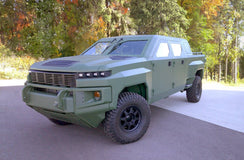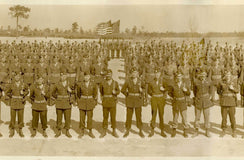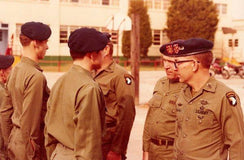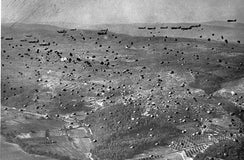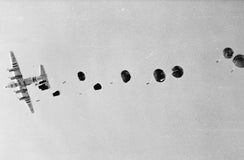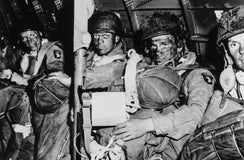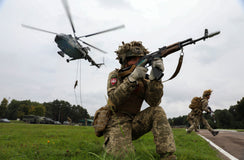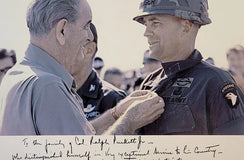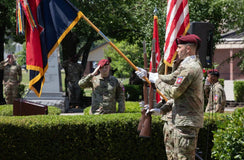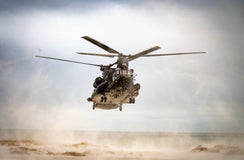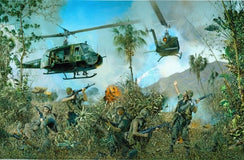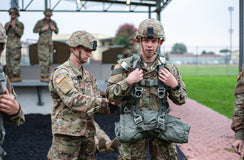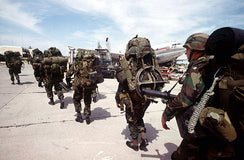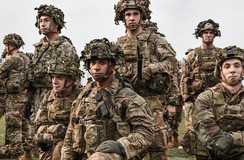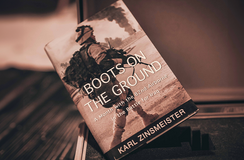From Origins to Excellence: The Early Days of Australian Paras and their Training School Today
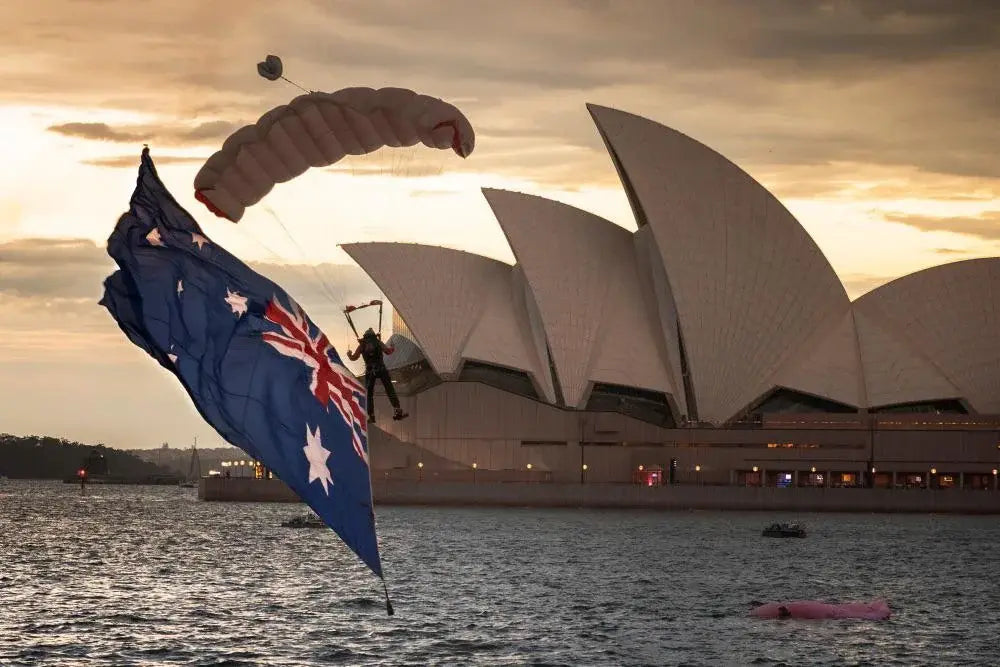
At the onset of World War II, Australia's small Permanent Army and its militia lacked any capability for parachute operations. However, the early successes of German paratroopers, particularly at Fort Eben Emael in Belgium in 1940, highlighted the strategic value of airborne forces and spurred Australia to develop its own.
In November 1942, the Royal Australian Air Force (RAAF) established the Paratroop Training Unit (PTU), selecting 40 volunteers for the inaugural training.

The first jumps were made at Tocumwal in New South Wales, with each initial course consisting of four descents. The PTU soon relocated to RAAF Richmond, where, in March 1943, the 1st Parachute Battalion was raised.

Initially, the battalion consisted of just two rifle companies. Its ranks were filled primarily by volunteers from other Army units, particularly the independent companies established in 1941–42 for irregular warfare. Many of these volunteers had already seen active service, and upon completing their parachute training with the 1st Parachute Training Unit, they earned the right to wear the maroon beret, symbolizing their elite status.

The maroon beret is a symbol of airborne forces globally, signifying the wearer's membership in a highly trained and specialized unit. Similarly, the parachute wings, also known as jump wings, are a symbol of a soldier's qualification as a paratrooper, earned after successfully completing a series of parachute jumps.
In April 1943, while based at Scheyville Farm near RAAF Richmond, a troop of engineers was integrated into the battalion, specially trained for clandestine demolitions alongside the rifle companies.

By October 1943, a third rifle company was formed, and by January 1944, the battalion reached full strength.

Following extensive company and battalion-level exercises, the unit was declared ready for operations in May 1944 and relocated to Mareeba airstrip in North Queensland. There, a fourth rifle company was added in June 1944. The battalion also gained organic indirect fire support in August 1944 when the parachute-qualified 1st Mountain Battery, Royal Australian Artillery, equipped with short 25-pounder guns, joined its ranks.

In late 1944, the battalion was alerted to prepare for deployment to Borneo as part of Operation Oboe. In early 1945, the unit underwent amphibious training for a potential role in the landing at Balikpapan. However, a shortage of suitable aircraft meant that the battalion did not participate in Operation Oboe.
The battalion was subsequently assigned to a new mission, Operation Kingfisher, aimed at rescuing thousands of Allied prisoners held by the Japanese at Sandakan in North Borneo. Tragically, this operation was also canceled due to the lack of aircraft, a common challenge faced by airborne units during the war. The prisoners were killed during the Sandakan Death Marches, a tragic event that underscored the difficulties and limitations faced by the unit. This turn of events led to widespread frustration among the unit's members, with many requesting transfers.
As the war drew to a close, the battalion was directed to prepare for a joint operation with British paratroopers in the planned liberation of Singapore under Operations Zipper and Mailfist. This mission, although it never came to fruition due to the war's end, marked a significant moment in the history of the Australian Paratroopers. The battalion's readiness to undertake such a crucial mission demonstrated their courage and preparedness, earning them the respect of their peers and the nation.
From Extinction to Joint Parachute Training Wing
In the post-war years, the need for a military parachute capability seemed to diminish, with parachute training ceasing entirely until 1951. In October of that year, parachute training was reestablished, driven by the formation of an airborne platoon within the Royal Australian Regiment (RAR).


In 1958, the PTW was re-designated as the Parachute Training Flight and was organized under the Air Support Unit. For the next two decades, military parachuting in Australia remained largely the domain of special forces. However, in 1973, a seminar at the Infantry Centre sparked renewed interest in establishing a conventional airborne capability within the Australian Army. This led to the formation of a trial airborne company within the 6th Battalion, Royal Australian Regiment (6 RAR). Despite this initial step, it would take another decade before substantial developments occurred.
On May 14, 1974, the responsibility for parachute training was officially transferred to the Australian Army, and the PTW was renamed the Parachute Training School (PTS), continuing its operations at RAAF Williamtown. The leadership of the PTS also transitioned, with an Army Lieutenant Colonel assuming the role of Commanding Officer and Chief Instructor. In the same month, the PTS established the Army Parachute Display Team, known as the “Red Berets,” while the Air Force’s Parachute Display Team was rebranded as the “Dominoes.” Comprised of instructors and staff from the parachuting school, the Red Berets perform displays across Australia, showcasing their skills with flags, smoke, and formation jumps, conducting between 15 and 20 displays annually.

The drive for a conventional airborne capability was reignited in 1981, leading to Delta Company of the 6th Battalion, Royal Australian Regiment (6 RAR) being assigned the parachute role. This momentum culminated in June 1983 when it was announced that the 3rd Battalion, Royal Australian Regiment (3 RAR) would become the new parachute-capable battalion.

The airborne role was further refined in 1985, with the granting of approval for 3 RAR to wear the distinctive parachute wings of the 1st Australian Parachute Battalion, along with the maroon beret, a symbol of airborne forces globally. Meanwhile, the SAS and Commandos also developed their own versions of parachute wings, solidifying their distinct identities within the Australian military.

In 1986, the Parachute Training School (PTS) relocated to purpose-built facilities in Nowra, New South Wales. This move established PTS as a lodger unit at the Naval Air Station HMAS Albatross, providing the school with a modernized base of operations and further solidifying its role in training Australia's elite paratroopers. The new location allowed for enhanced training capabilities and closer integration with the broader Australian Defence Force, particularly the Navy while continuing to uphold the high standards of military parachute training.

The Australian Defense Force Parachute School: “Knowledge Dispels Fear”
In the 2006 restructuring, 3 RAR was transformed into a rapid deployment light infantry battalion, with the Army’s parachute capabilities transitioning to the Commandos. Today, 3 RAR is part of the 3rd Brigade within Forces Command.
On October 1, 2011, the Parachute Training School (PTS) was incorporated into SOCOMD, moving from Forces Command. SOCOMD focuses on training special forces and support role paratroopers in various airborne techniques and evaluating and testing parachute systems and equipment. The Parachute Maintenance Wing is responsible for repacking and repairing all personnel parachute systems.
The PTS now oversees all individual parachute training within the Australian Defence Force (ADF) and supports parachute units across Australia, in addition to trialing and developing new equipment.
On November 19, 2019, SOCOMD's training units were reorganized, and the school was renamed the Australian Defence Force Parachuting School (ADFPS). This school is now under the command of the newly established Defence Special Operations Training and Education Centre (DSOTEC).
The role of the Parachute Training School (PTS) is to train Australian Defence Force (ADF) members and other authorized personnel in parachuting, as well as to develop parachute doctrine and equipment to meet the Army's current and future needs. Operating under SOCOMD, the PTS is one of several organizations within this command structure, led by a Brigadier (OF-6). The day-to-day management of the Australian Defence Force Parachuting School (ADFPS) falls to the Commanding Officer, a Lieutenant Colonel (OF-4).

At the heart of the Australian Defence Force Parachuting School (ADFPS) is the Headquarters, which orchestrates the school's overall functions. The Training Wing oversees all parachute training activities, ensuring that personnel receive the highest-quality instruction. The Development Wing, also known as DEV WING, focuses on evaluating and testing personnel parachute systems and associated equipment, playing a crucial role in refining and enhancing parachute technology.
Meanwhile, the Parachute Maintenance Wing (PMW) is responsible for storing, repairing, and repacking all personnel parachutes, ensuring that each system is maintained to the highest standards. The Logistic Support Wing supports these operations, which handles storage, transportation, medical services, and catering needs, ensuring smooth and efficient support for the school’s diverse activities.
From Static Line Training to HAPO Training
The Australian Defence Force Parachute School (ADFPS) offers a comprehensive parachute training program divided into three key elements: Static Line, Military Free Fall, and High-Altitude Parachute Operations (HAPO).
Static Line training is designed for massed troop insertions. Paratroopers secure themselves to a strong point inside the aircraft and jump from altitudes ranging between 800 and 1,000 feet. The descent is controlled under a symmetrical canopy, which can occur over land or water. The training covers the use of both the T-11 non-steerable parachute and the MC-6 steerable parachute.
Military Free Fall training is for highly qualified paratroopers who exit the aircraft at altitudes up to 12,000 feet. These paratroopers freefall in formation before deploying their parachutes at a predetermined altitude. The goal is to guide the team to a precise landing point.
High-altitude parachutist operations (HAPO) involve even more advanced techniques. Teams jump from up to 25,000 feet while using oxygen to navigate the descent.
These training elements are supported by a range of initial and continuation courses at the Parachute Training School (PTS). Courses include the Parachute Jump Master Free Fall course, Parachute Jump Instructor, RAM Air Parachute Static Line course, Free Fall Tandem and Tandem Master courses, Free Fall Cameraman, Free Fall Paratrooper, Basic Parachute Course (a 13-day program), a water module for the Basic Parachute Course, and the HAPO course. Each course is tailored to enhance the paratroopers' skills and ensure they are equipped to handle various operational scenarios.
The Introduction of Technology
In 2012, Systems Technology Inc. collaborated with Defcon Technologies Ltd, a local representative, to upgrade the Australian Army’s PARASIM® network at the Australian Defence Force Parachuting School (ADFPS). Initially installed in 2008, the six-station network was enhanced to PARASIM® Version 5, including a full replacement of all simulation computers.
PARASIM® 5, developed by Systems Technology Inc. in California, is a safe, efficient, and cost-effective solution for parachute training. It supports premeditated static-line and freefall operations, including aircrew emergency bailout and ejection scenarios.
PARASIM® is a comprehensive parachute simulation software designed to enhance military parachute operations while ensuring safety. It allows training for search and rescue, combative warfare, and bailout ejections without risking personnel. The software features graphics with scene extents of over 200 miles, canopy malfunction simulations, a custom wind field entry system, software-controlled motorized frames, and a jump log recording system. It is tailored to improve training for Static Line, Military Free Fall, and High-Altitude Parachute Operations.
The Red Berets
The Australian Army Parachute Display Team, known as The Red Berets, was established in May 1974 and comprises elite members from the Parachute Training School. These soldiers, all qualified military freefall paratroopers, undergo rigorous training before being selected for the team. Many members hold advanced qualifications in military and civilian parachuting and regularly compete nationally and internationally. While the team is primarily composed of Army personnel, they often receive support from the Navy, Air Force, and civilian aircraft.
The Red Berets perform demonstrations across Australia, showcasing the precision and skill cultivated at the Parachute Training School. Their displays involve exiting aircraft, forming intricate team formations in mid-air, and landing with pinpoint accuracy, often with flags and smoke to enhance the visual impact. These displays offer a glimpse into the capabilities of ADF airborne operations, reflecting the high level of discipline and teamwork required to execute such missions in challenging environments.
Check out the ADF Red Berets parachute display team, which is exciting crowds in the Sydney Harbor as they drop into Sydney's Australia Day festivities. The trailing red smoke and the carrying of the Australian National Flag jump-started the festivities.
https://youtu.be/z7A15J9Cao8?si=4a9vPRxG1-O1Vru3

